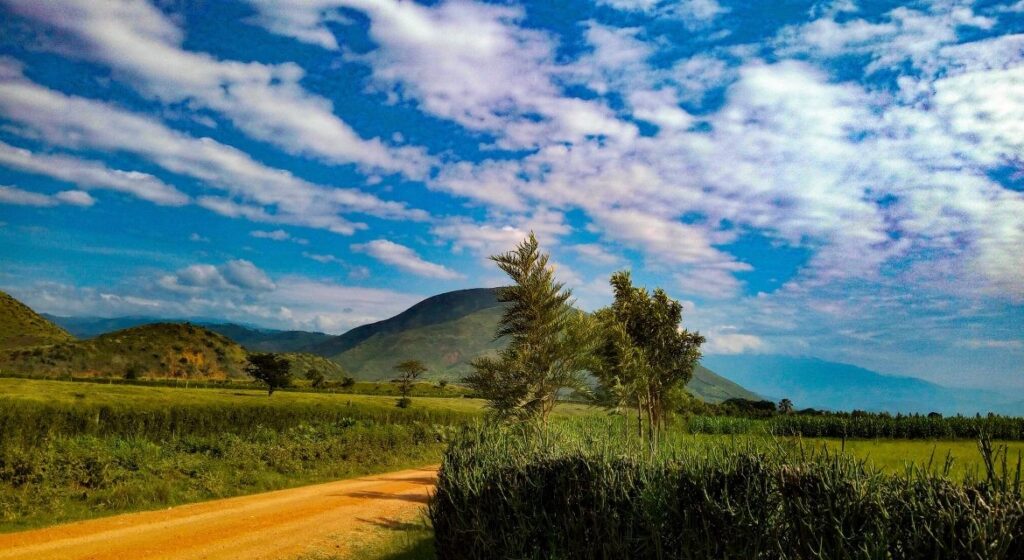In the previous article, I briefly shared about the different land tenures in Busoga sub-region. In this article, I have decided to delve into customary landholding patterns in the region. Researchers and scholars have noted that prior to 1900, customary land tenure was predominant in all the regions of the country. This was before the colonialists came to Uganda.
The advent of colonialism and the subsequent introduction of their laws altered relations on land in several parts of the country. During the colonial times, occupation of land by non-Africans was kept at relatively low levels in all parts of the country.
In spite of the above events, customary tenure in Uganda has persisted for a long time in Uganda.
According to the Uganda Country Brief: Property Rights and Land Markets, by the end of the 2000, approximately 5% of the total landmass of Uganda was under freehold and leasehold, 10% was under mailo tenure, and 85% was still under customary tenure.
According to researchers, in pre-colonial and colonial times, the Basoga had a unique land structure, consisting of four levels: the State level, the omutala, the ekisok, and the individual level.
Each of the pre-colonial Busoga states was subdivided into emitala (singular, omutala). The omutala was an area of land bounded by either swamps or natural features such as rivers, valleys, or mountains. The dependence on natural boundaries as the determinants of its extents made omutala become a convenient administrative unit for the allocation of land to individuals. The third level in the land structure was the ekisoko, a sub-division of the omutala and it was the final administrative unit in the state system.
Land ownership on a small scale was the last stage in the structure. This category included the majority of cases in which individuals were granted land for daily use.
Pieces of land were passed over from one generation to another. Land usually belonged to a clan and the clan or family had the power to make decisions on land usage as well as settle land disputes. Clan land could not be sold and leased to another person outside the clan because there was no individual ownership. Land transactions or issues were a community affair. This was for purposes of maintaining the closeness and a shared consciousness between members of the same clan and related families. It was also intended to keep related families from being joined by people with whom they did not share a common ancestry. This was because land and ancestry are closely linked in Busoga.
This was done not only to preserve clan land but also promote sustainable use of resources. These were agrarian communities that entirely depended on land for their sustenance and selling off their land was a way of reducing on their food production which was suicidal in a sense. Vigilance had to be taken to keep their source of livelihood. It, therefore, suffice to say that land has always been deeply entrenched in the values, norms and practices of the various ethnic groups in Uganda, including the Basoga.
Customary tenure has existed since time immemorial but it gained formal recognition under 1995 Constitution of Uganda. The Land Act and its subsequent Amendments officially recognized customary tenure as a legitimate system of land holding and defined the various ways in which it manifests.
There are various times of customary land recognized by the current legal regime:
Customary communal land; Where persons or communities share ownership or use of land for a common purpose. A particular group of people in a particular area for purposes like grazing, water source, and firewood collection, wild fruits and vegetables, fishing, harvesting honey and white ants, cutting papyrus etc, communally owns the land. In most cases, rights to access this land are inherited.
Customary family land; Is where the head of the family or clan may be said to ‘own’ the land. Its utilization is usually controlled by family head, elders, clan heads or a group in its own well-defined administrative structures.
The heads are responsible for protecting the land and ensuring that every family member gets rights to use some of the land. Family land is inherited within the family and the management of the land is passed on from parents to children.
Individual customary land; Is where an individual is said to ‘own’ land because the land was allocated to them, to use or own permanently, or they inherited the land, or purchased the customary land as an individual. In many parts of Busoga today, customary land is increasingly getting individualized.
In all customary land transactions, special protection is accorded to the rights of women, children and persons with a disability to own, occupy or use customary land. This is specified under Section 27 of the Land Act. It should be noted that most unregistered land is undocumented customary land.
Registration of customary rights and interests are governed by the by the Land Act Cap 227 as amended. Section 6(1) of the Land Act provides that a person, family or community holding land under customary tenure may acquire a Certificate of Customary Ownership (CCO) in respect of that land. The CCO is registered at the customary tenure registry at sub-county level at the office of the recorder. The land Act under section 8(2) permits the holder of a CCO the right to mortgage or pledge land, in exchange for financial resources.
In January 2022, some land owners in the sub counties of Kibaale, Nabweyo, Nagonde and Ivukula in Namutumba District were able to acquire 750 Certificates of Customary ownership through the Ministry of Lands and development partners. The Ministry has plans to roll out the exercise in the different parts of Busoga region to enable people secure their land rights.
It should be noted the most prevalent customary land holding pattern is the Individual customary land due to urbanization that is growing at a faster pace in Busoga region.
The writer is a surveyor




